One of the limits I set myself for the Mad Science setting was encounters without combat. It’s right there in the introduction:
There is no combat – solve your problems like a grown up.
Encounters without combat: harder than it sounds
 S3 (which needs a better name) and the Mad Science setting are heavily social in concept. There is a whole mechanic dedicated to social hierarchy, The fact it can be fully explained in less than half a page notwithstanding, it was meant to force players to talk with NPCs not just roll dice.
S3 (which needs a better name) and the Mad Science setting are heavily social in concept. There is a whole mechanic dedicated to social hierarchy, The fact it can be fully explained in less than half a page notwithstanding, it was meant to force players to talk with NPCs not just roll dice.
The trouble is Dungeons and Dragons (and all that came after that) have set me up to fail. The standard for tabletop RPGs is that characters progress via gaining experience points (XP). XP comes most efficiently through the primary conflict resolution mechanic – combat. In other words, kill things to get stronger.
S3 does away with level progression and you can never get so strong that a serious wallop from a sharp sword is something you can walk away from. You know, like real life.
I’ve been used to seeding encounters with goblins, dragons, and various monsters. Take that away and what do we have to drive the story forward?
This difficulty of doing things other than combat is probably why the likes of Matt Mercer have dedicated entire videos to the subject and why it shows up on forums again, and again. Non-combat encounters are not easy.
Crafting encounters without combat
I want to look at some ideas for crafting encounters without combat and how we can make other situations as much fun as combat.
Why combat is the go-to encounter for encounters
Before we can fix encounters without combat we need to know what it is about combat encounters that make them so compelling.
Combat is very often set up to reward players that fight. Not only with XP, but also with coin and cool loot (stuff). Combat is an easy way to dole out the advancement of gear, wealth, and character growth. As a writer, that just feels like lazy storytelling.
Combat can be:
- Easy: Bad monsters are pre-rolled.
- Epic: Slaying the dragon, for example.
- Immediate: This is happening right now.
- Tense: Bad monsters are trying to kill you.
- Clear objective: Bad monsters want to kill you; kill them first.
We writers know that conflict advances the plot. We know that we need to make the story interesting and compelling. Combat does all that for the players and is easy for the person running the game.
Any encounters without combat need to bring these things to the table too.
Building that in encounters without combat
Easy encounters without combat
What we are talking about here is templating. Games like Pathfinder and the like often come with whole books packed full of monsters. These monsters have stats, environment, skills, and objectives all set up and it is safe to assume they all want to kill the players (tension and conflict).
What I think RPGs are crying out for is a bestiary not of beasts and monsters but of the building blocks of social conflict. In Pathfinder, for example, there is one NPC codex to five or six books of monsters. There are no pre-set problems or encounters at all.
Sadly there are no shortcuts, yet. However, by working out how NPCs, nature, the gods, fate, puzzles, problems, etc. stand in the way of the player’s objectives, you give them something to wrestle with that is not just another goblin army.
Creating epic moments in encounters without combat
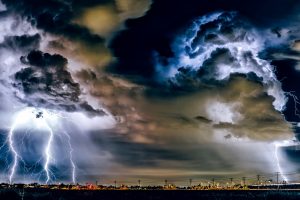 An epic encounter in fiction or RPG has three elements that must always be present. And they must be clear.
An epic encounter in fiction or RPG has three elements that must always be present. And they must be clear.
- A non-trivial cost of failure (high stakes)
- A difficult or costly path to success (high cost)
- An end result that makes it all worthwhile (high reward)
This set up is pretty much the underlying tide for every good television program, film, and book ever. At least the fiction ones, anyway.
If you are writing a story, you would show the reader (and the protagonist) the reward – getting the girl, winning the war, saving the world, obtaining the McGuffin, or whatever. Then, when you know the reader and the protagonist are invested in that outcome, you throw problems in the way. Each solution leads to more problems. Each problem has higher stakes and requires more effort than the last one. Until finally, the payoff – the dragon is slain, The Joker is back in prison, Lex Luthor has been stopped, the girl has said “yes”, the world is finally safe…
Both on the grand scale and the single game session, you need to allow your characters to find ways to triumph against the odds. This is how the sense of epic moments can be created.
You can see why most game designers just lump for a lot of monsters to fight.
Sense of the immediate
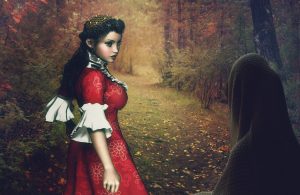 A combat encounter feels urgent because if you don’t do something about it now, then it is game over. That same urgency needs to be in other encounters too.
A combat encounter feels urgent because if you don’t do something about it now, then it is game over. That same urgency needs to be in other encounters too.
For example, if you are “fighting” nature – your ship is on the high seas in a storm and the safe harbour is a long way away – then players should be fighting fires not waiting for the ship to get home. By fires, in this case, I mean the hold is taking on water and must be bailed out, the main sale has ripped, the mast is breaking, people are at risk of being washed overboard. Here comes another wave, roll reflex to grab that rigging. There might have been no combat, but by the time the players have wrestled the ship into port they will feel like they just fought an elder dragon and lived to sing about it.
Think about Star Wars. When Luke sees the Princess asking for help, he’s off at once. There’s no time to wait.
What about Harry Potter? The moments we read about are like the encounters of a game. They must be solved now. Then a few weeks pass and the next moment happens.
Then there is James Bond. Band faces one problem after another as he chases the bad guy or the stolen nukes (or whatever). There’s no time for him to take a nap because things are happening with a sense of the immediate.
Creating tension in encounters without combat
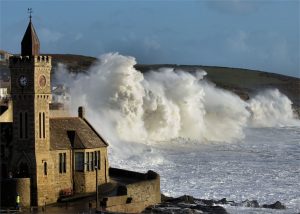 Tension is a product of the time limited urgency of the immediate and the conflict of opposing interests where the risk feels real.
Tension is a product of the time limited urgency of the immediate and the conflict of opposing interests where the risk feels real.
There is a reason that the tropes of the ticking time bomb, the countdown to destruction, and so forth are popular in films. Limited time turns the tension up.
Consider the difference, here. You have invited thirty people from work to your new home for a party which will take place in nine weeks time. That might be a bit stressful, but nothing you can’t handle. Then you check the calendar and you realise that it is not nine week but nine days and you have done no preparation and the decorating has not been finished. Now you are tense. Do that to the players.
The tension can be turned up to eleven by simply throwing some additional problems into the mix. A storm, a theft, a murder, a runaway child, an angry mob… Go wild. Use your imagination. Anything that makes time scarce and raises the stakes will work.
Keep the objective clear
 Nothing kills tension faster than not knowing why you are doing something. If the players feel that they could walk away for no cost or simply focus on trying to work out why they are there, then they will not feel tense but confused. Confused players slow the game down.
Nothing kills tension faster than not knowing why you are doing something. If the players feel that they could walk away for no cost or simply focus on trying to work out why they are there, then they will not feel tense but confused. Confused players slow the game down.
Keep the objective clear. As writers, we do this by reminding the reader and the protagonist what they are fighting for. What or who they are trying to get, stop, or catch.
Keep the objective in front of the players but tantalisingly out of reach.
Enemies that you cannot fight with swords, guns or magic powers
That’s the storytelling theory anyway. Now for some actual ideas that players must use skills other than “attack” to fight. You might recognise these as the five basic types of plot.
Nature (and the gods)
 Storms, drought, floods, fire, power failure, earthquake… Those things that are beyond our control can provide a good source of conflicts. There can be the risk of death, strength checks, bravery, and heroic rescues and no one ever needs to draw a sword or fire a gun. Indeed weapons are useless in the face of such epic forces. All the players can do is try to pick up the pieces and save as many people (or things) as they can.
Storms, drought, floods, fire, power failure, earthquake… Those things that are beyond our control can provide a good source of conflicts. There can be the risk of death, strength checks, bravery, and heroic rescues and no one ever needs to draw a sword or fire a gun. Indeed weapons are useless in the face of such epic forces. All the players can do is try to pick up the pieces and save as many people (or things) as they can.
There is a reason why the Fire Service are considered such heroes – because they fight things that cannot be reasoned or bargained with. Fireman (and women) are, in my opinion, modern-day heroes. Anyone who handles the aftermath of a disaster and helps save lives is a hero. Why not give your players the chance to be that sort of hero?
This sort of enemy relies on establishing a good sense of place. Players need to be aware of the sea, the volcano, or the river and what is around them that they can act upon. The more real you can make the location feel the bigger and more epic the act of the gods will feel.
Fate and chance
 Things go wrong. Things that go wrong at a critical moment can really raise the stakes.
Things go wrong. Things that go wrong at a critical moment can really raise the stakes.
For example, your party are using a cart to transport food back to the famine-stricken town when the rear axle breaks. The night is closing in and there are dangers in the night. Not to mention your town will literally starve if you don’t find a solution fast.
It is not just that things break down but things can be lost or stolen too. The key to the armoury where all your kit is being kept could be stolen. The one piece of evidence to prove the innocence of a man about to be hanged might just have dropped from your pack on the road somewhere.
Other people
 People are complicated. They often want different things and those things might be at odds with the aims of the players. This is where that NPC codex comes in.
People are complicated. They often want different things and those things might be at odds with the aims of the players. This is where that NPC codex comes in.
For example, the players are transporting a valuable gem. They can’t just sleep because stealthy ninja thieves (or something less silly sounding) could be lurking everywhere. Several people are offering to help but some or all of them could be up to no good. Now the characters have to overcome trickery and sneak thieves. They have to fight their own tiredness to stay on watch (and the penalties for not being rested that go with that).
What about factions? There could be a faction that wants to build a statue to the local dubious hero and those that want to build one to the local greedy mayor. Then there are those that want to see the money used to rebuild the walls. Or maybe the argument is a guild hall vs a dance hall. Once the players get caught up in that the complexity and tension could run very high. Perhaps one or both of the facts have rare items the players need – they have no choice but to try and resolve an intractable problem.
People also do things like get stuck in mines, lost in woods, kidnapped by pirates, etc. While there might be some fighting involved the main thrust of the adventure is in saving the person from the situation they got themselves into.
The character’s own nature
 This is a staple of horror, vampire, and werewolf genres. Having the character have to fight their own nature gives them an internal struggle every bit as real as a fight. This works well in a story setting but in an RPG you need to think about how the players will engage with this and the cost of failure.
This is a staple of horror, vampire, and werewolf genres. Having the character have to fight their own nature gives them an internal struggle every bit as real as a fight. This works well in a story setting but in an RPG you need to think about how the players will engage with this and the cost of failure.
Will they need to maintain a supply of some rare and costly consumable to keep their humanity dominant? The vampire’s supply of blood for example.
Do they need to go off by themselves and let the beast rage for a while? Or maybe they need to be locked up during the full moon?
There is no doubt that it would take a more mature player to really make the most out of such a conflict but there is no reason why this cannot be every bit as epic as taking on the storm in a tiny boat and winning.
The important thing is to make the cost of failure significant but give the player the tools with which they can fight their own nature beyond just rolling a few dice each day.
Society itself
This differs from other people. While individuals and groups can cause all sorts of problems what if the character is something that is universally shunned.
- A half-elf in a community of purist elves.
- Maybe the character with orc ancestry exists during a time of war against orcs.
- A wizard where magic is outlawed.
- The cleric of a shunned religion.
- A werewolf in a time where such things are hunted to death.
Any group that is forced into the shadows is forced to wrestle with society itself. This gives rise to all sorts of encounters without combat. The characters must maintain their secret, hiding who they are. They need to move carefully for fear of the repercussions if they are found out. After all, the consequences of failure can be total and final. There is no resurrection spell for everyone in your hometown finding out you drink blood to stay alive.
Maybe the scope is more epic – people are draining the world of life force and only you and your party know it is a problem. How do you get an entire society that runs on stolen life force to change it’s ways before the world ends? That is probably an entire campaign rather than an individual fight but you can see the ways in which it sets up the ongoing struggle. Every encounter with an NPC is a chance to convert them to a more ecologically sound path. That’s a lot of encounters – all of them combat free (probably)
Encounters without combat: let’s get started
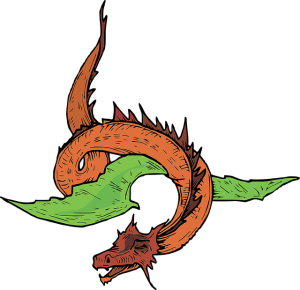 When I started writing this post I had no ideas for non-combat encounters. I have to say that now I have altogether too many. That’s no bad thing.
When I started writing this post I had no ideas for non-combat encounters. I have to say that now I have altogether too many. That’s no bad thing.
I hope that I’ve inspired you to look beyond just setting another dragon and some more goblins for your players to fight. They could also be fighting time, tide, fate, themselves, and the culture around them. True heroes slay dragons but some of those dragons are metaphorical.
I’d like to see those other skills on the character sheet other than attack and HP getting a bit more attention in campaigns. That’s not to say that RPGs should not have fighting all the time but it is about time we mixed things up a bit.
If you have any reat ideas for non combat encounters post them in the comments.
Let me know your thoughts.


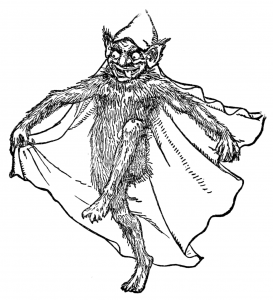
Pingback: The five types of antagonist - Thanet Creative